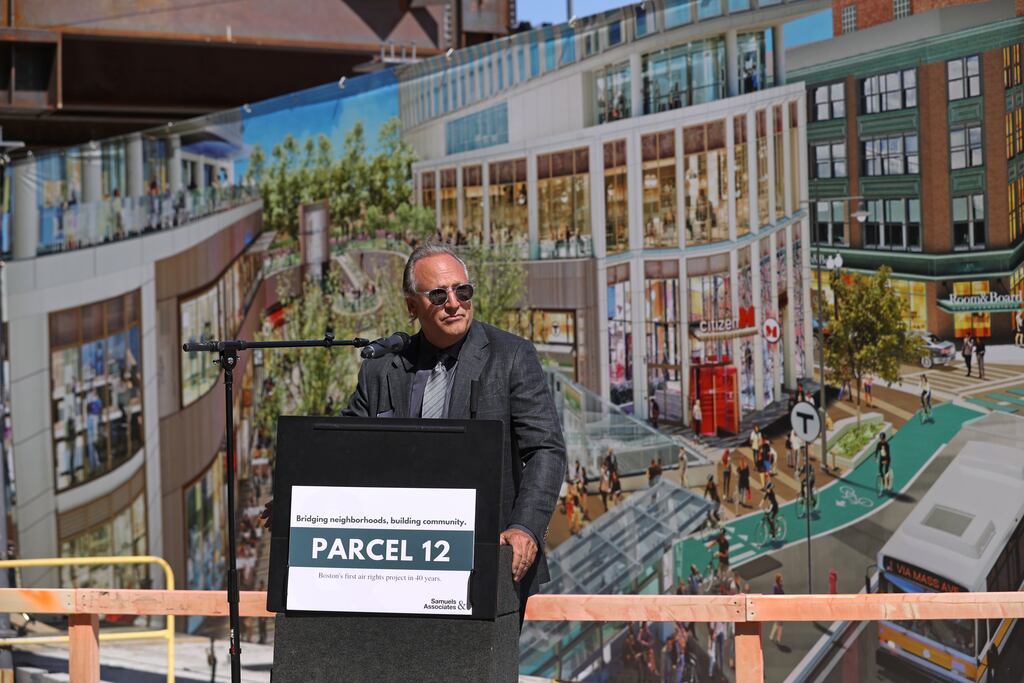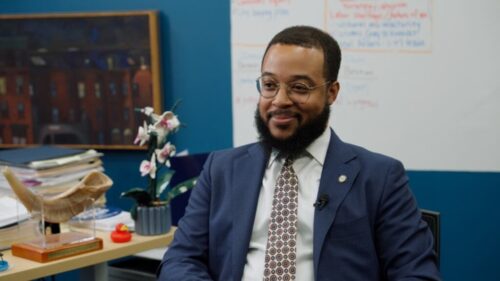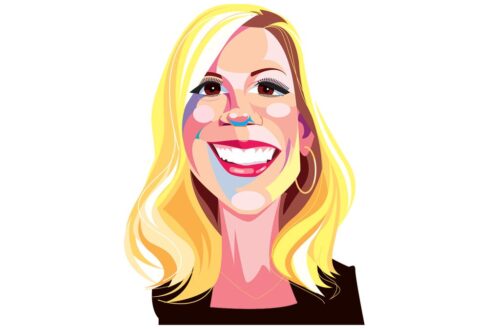Globe reporter Janelle Nanos sits down with leaders in the city’s business community to talk about their career paths, work and accomplishments, as well as their vision for Boston’s future.
How do you construct a building on air? If you’re Steve Samuels, it takes both patience and engineering prowess.
Samuels is both principal and namesake of Samuels & Associates, a longtime Boston-based development firm that recently completed the construction of the Lyrik building at the intersection of Newbury and Boylston streets, the first air-rights construction project over the Massachusetts Turnpike in over 40 years. The project is two buildings, an office tower that houses CarGurus and will soon be home to the US headquarters of Lego, and a Citizen M hotel. For the latest episode of Bold Types, he sat down with The Boston Globe’s Janelle Nanos to talk towers.
It was a long time coming. For years, MassDOT was attempting to figure out what to do with the plot known as Parcel 12, which spans the Pike along Mass. Ave. Samuels, who at the time was developing much of the Fenway, used to walk over the bridge daily from his office on Newbury Street, and he would envision how a building might stitch together the Back Bay and the Fenway. He finally got the chance in 2013, when the state awarded him and a partner the site.
But actually getting a building up was a decade-spanning feat unto itself. It required the construction of a deck atop eight lanes of highway and busy rail lines, the reworking of a Pike on-ramp, and the construction of a new entrance to the MBTA’s Hynes Green Line stop. When the COVID-19 pandemic broke out, it also involved some intense conversations with both lenders and tenants who’d signed on to the project. But, crucially, CarGurus — the office tower’s anchor tenant — decided to keep its 225,000-square-foot lease and move from Cambridge after all.
“You’re talking about over 10 to 13 years from soup to nuts,” said Samuels, who jokingly calls himself the “conductor” of the project. “Everybody at one moment or another came to the conclusion that, ‘Whoa, maybe this is not a risk worth taking.’ Of course, it’s our job as the conductor or the developer to knit everybody back together. And one by one, we brought the capital stack back together and the tenants back together to a point where everybody saw that it was possible and that if we were careful, we could get it done.”

But equally important, Samuels said, was getting feedback from the neighbors about what they wanted from the space.
“When you propose a building like this in a neighborhood that cares so much like the Back Bay, there’s a lot of dialogue. And in this case, what mattered surprised us,” he said. “The view of the western sunset became something that came up in the permitting process, which we had never really thought of. There were people who said, ‘We like to go stand on the bridge and look at the sunset, and it’s the only place we get a clear view of the western sunset. Don’t take that away.’”
Samuels had originally proposed one building that spanned fully across the Pike from Newbury to Boylston Street, with no view corridor, but began to rethink those plans, he said.
“The very same time I was having a discussion with our ex-mayor, Marty [Walsh], he was talking about how concerned he was with the Mass. Pike entrance over here at Mass. Ave. at the end of Newbury Street and how many problems there were from a safety perspective. I said, ‘If we could find a way to fix that ramp and make it safe by moving it, can we use the real estate where the ramp ends to build on?’ And he said, ‘Of course, why not?’ And that was a solution that most of the neighborhood just fell in love with when they saw it.”
Today, the space between the two buildings is a two-tiered plaza where a mix of retail and restaurants is starting to fill in (the carmaker Rivian opened its first Massachusetts outpost in the plaza this summer). The views are still there, but now it’s a place for office workers to linger or shoppers to pause after a stroll down Newbury or Boylston streets, said Samuels, who said he prizes placemaking above everything else when he conceives of a project.
“It’s really everything. I mean, you can put up buildings and people go to work in their spaces, but it’s really about how that space connects with the community that it’s in. And that intersection is where we spend all of our time and our money,” he said. “And making sure that the building has unique community spaces where families can hang out and workers can bring their relatives in and spend time is it’s really why people like going to work. It’s the difference between staying home. So placemaking is really the most important part of building buildings for us.”

Having played the long game in bringing this building to life, Samuels isn’t breaking ground on a new air rights project again anytime soon. And the city is a far different place today than when he started, with both office work and the retail landscape still adjusting to the long-term impact of the pandemic. But Samuels says he’s bullish on Boston, and on the city’s ability to reimagine itself in the years ahead.
“We have a strong belief in Boston’s future,” he said. “The fact that we’re not all working from office spaces now and work from home has become an ingredient that we never would have conceived before is something that’s still working through our psychology. And it’s our belief that in the same way that internet shopping and bricks and mortar found a way to coexist and both are necessary, I think you’ll find that there’ll be a correct balance that comes out between work from home and working in the office. You know, surprisingly, this building was built and leased at a moment in time when office buildings are not so popular, but yet we have two world headquarters here.”
Liquor licenses, small business grants, and luring Lego: Segun Idowu thinks big to rebuild the city’s economyHow Will Ahmed turned an idea he had as a student athlete at Harvard into a $3.6 billion fitness-tech brandAt The Engine Accelerator, Emily Knight helps bring world-changing ‘tough tech’ out of the lab



Comment count: